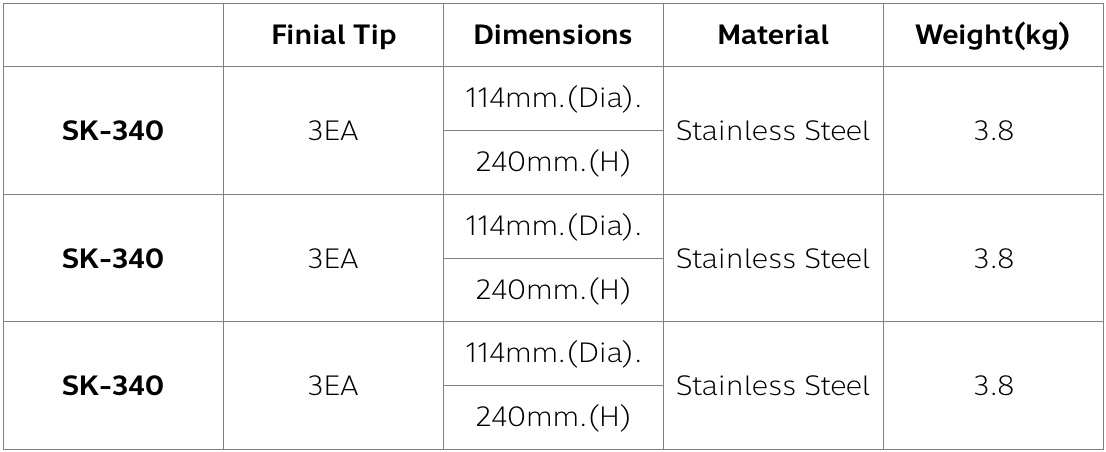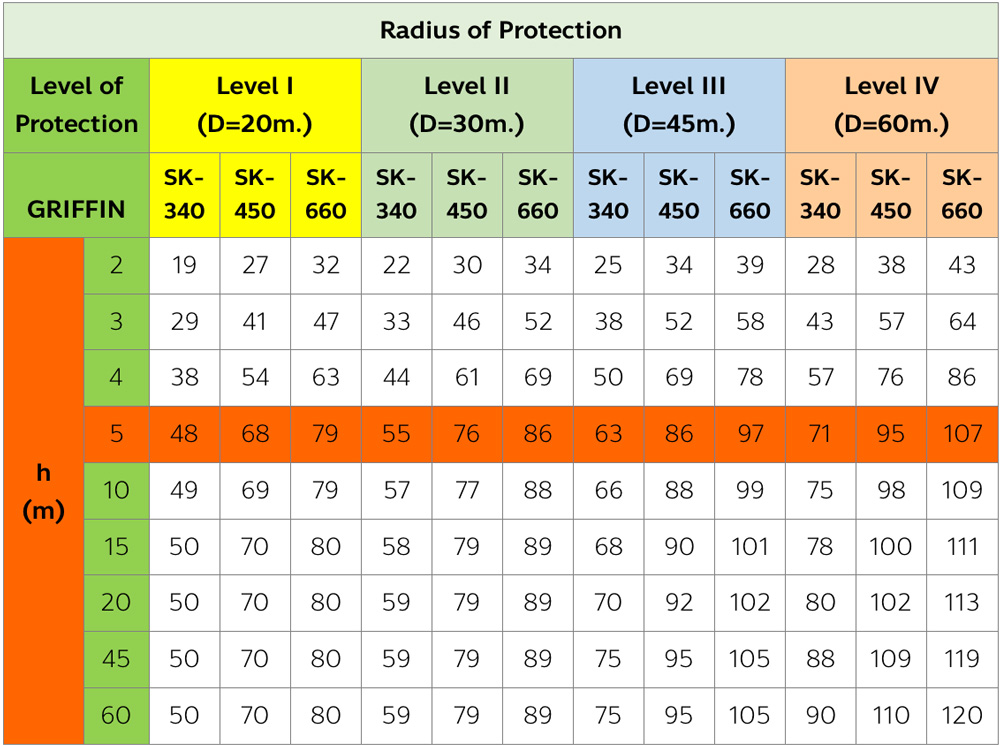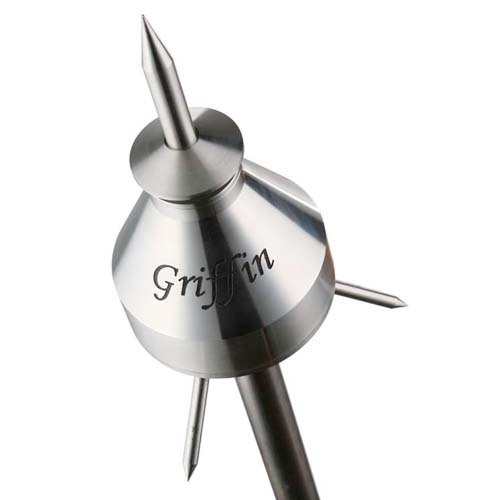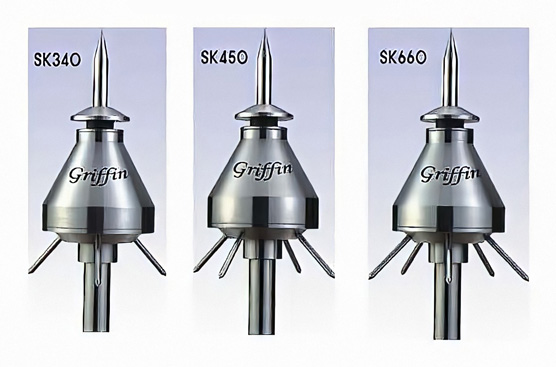ระบบป้องกันฟ้าผ่าแบบรัศมีวงกว้าง
GRIFFIN
SUNKWANG PRODUCT

PROVEN EFFICIENCY
The collaboration between KERI also gave birth to a method of test in high voltage laboratory, used
as a procedure of evaluation of the Early Streamer Emission air terminals in Appendix C of standard
NF C 17 – 102. The aim of this test procedure is to evaluate the efficiency of an Early Streamer
Emission air terminal.
THE ADVANTAGE OF INITIATION ADVANCE
The unique efficiency of the E.S.E. lightning conductor is based on a specific initiation advance; well before the natural formation of an upward leader, the Griffin generates a leader that rapidly propagates to capture the lightning and direct it to earth. Validated in the laboratory, this gain in time ralative to the simple rod provides additional essential protection.
CALCULATION OF PROTECTED AREAS
The radius of protection Rp of a E.S.E. Lightning conductor (Griffin) is given by the French Standard NF C 17-102 of July 1995. It depends on the initiation advance ∆T of the E.S.E. Lightning conductor (Griffin) measured in the high voltage Laboratory, on the levels of protection I, II, III calculated according to the lightning risk assesment guide (appendix B of the French standard NF C 17-102) and the height h of the lightning conductor over the area to be protected (minimum height = 2m).
Rp : radius of protection in a horizontal plane located at avertical distance h from the Griffin tip.
h : height of the lightning conductor tip above the surface(s) to be protected.
D : standardised striking distance.
∆L : . ∆T (initiation advance)
Rp : (for h ≥ 5m) For h < 5m, see the radius of protection table opposite.
∆T : initiation advance measured during efficiency tests according to appendix C of the French standard NF C 17 – 102




